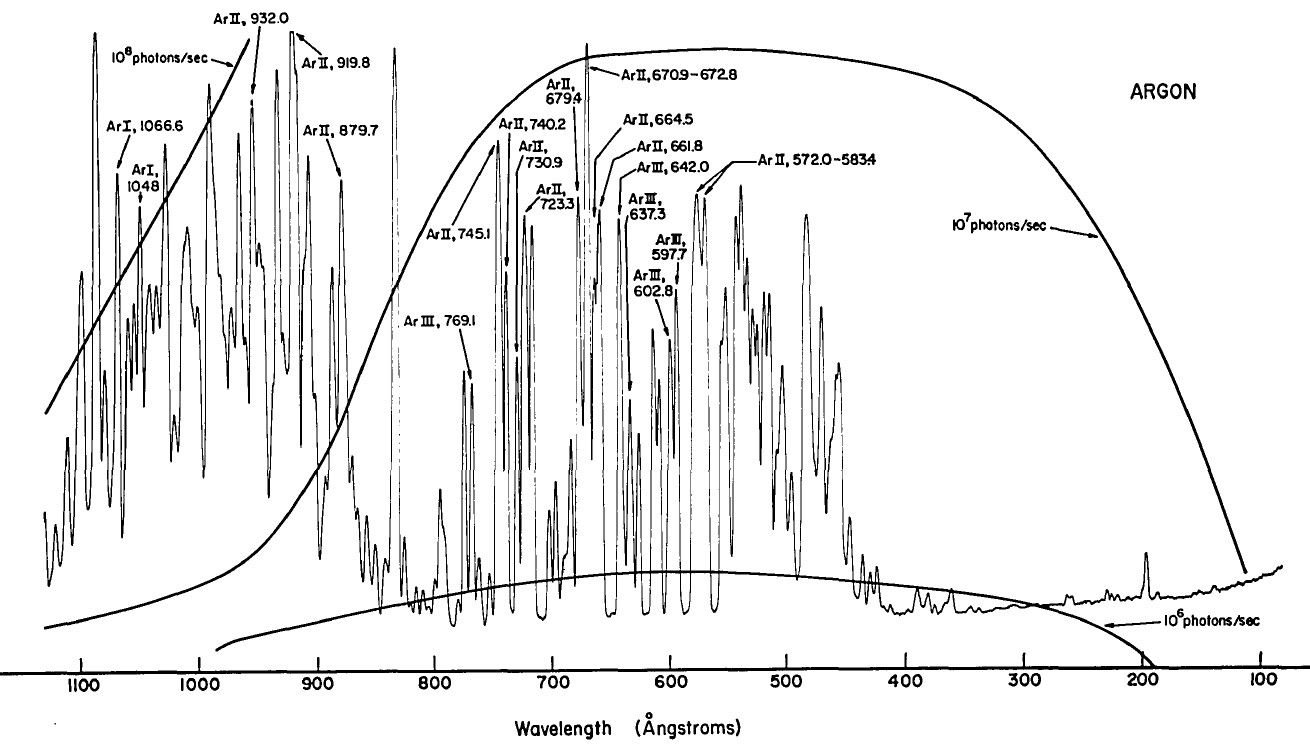
Microchannel Plate Intensifier
- Windowless, works from 1 to 180 nanometers
- Solar Blind
- Cesium Iodide enhancement coating
- CW or Pulsed operation
Operating in the Soft X-ray Extreme UV or Vacuum UV requires specialized detection systems. Difficulties with conventional detection schemes in this wavelength range include window transmittance, vacuum sealing and photocathode materials sensitivity.
In order to operate a multichannel or array based detection system in the vacuum ultraviolet, one method is to use an open, windowless microchannel plate (MCP) as an intensifier. MCP intensifiers are most frequently employed when direct detection charge coupled detectors (CCDs) cannot be implemented due to geometry or packaging (e.g. at grazing angles) or when shutter, or gating is required.
 The MCP converts invisible vacuum UV radiation into a visible phosphor emission easily detected by photodiode array (PDA) or charge coupled device (CCD). Coupling the phosphor emission to the CCD is by direct fiber-to-fiber coupling, or by lens relay.
The MCP converts invisible vacuum UV radiation into a visible phosphor emission easily detected by photodiode array (PDA) or charge coupled device (CCD). Coupling the phosphor emission to the CCD is by direct fiber-to-fiber coupling, or by lens relay.
The MCP will be permanently damaged if operated at vacuum pressures exceeding 1 x 10^5 torr. Interlocking the vacuum gage system to the detectors HV supply is strongly recommended.
Microchannel Plate Intensifier Data Sheet
Additional Information:
| Detector | Microchannel Plate Intensifier |
| Wavelength range | 1 to 180 nanometers |
| Operation | CW (pulse detection optional) |
| Signal Output | Visible light emitting phosphor screen (P43) |
| Phosphor HV Input | 5kV SHV |
| MCP HV Input | 1kV MHV |
| Power Supply | 5000 and 1000 VDC required, sold separate |
| Requires | Vacuum 10E-5 torr or lower |
| Mounting | 4.63" outer diameter Conflat(TM) flange |
| Weight | 1 lbs |
Sample Spectra

Outline Drawing

Select Publications
Abstract: This paper is a report on our effort to use reflectance measurements of a set of amorphous silicon (a-Si) and uranium (U) multilayer mirrors with an uranium oxide overcoat to obtain the optical constants of a-Si and uranium. The optical constants of U, its oxides, and Si, whether crystalline or amorphous, at 30.4 and 58.4 nm in the extreme ultraviolet (EUV) are a source of uncertainty in the design of multilayer optics. Measured reflectances of multilayer mirror coatings do not agree with calculated reflectances using existing optical constants at all wavelengths. We have calculated the magnitude and the direction of the shift in the optical constants of U and a-Si from reflectivity measurements of DC magnetron sputtered a-Si/U multilayers at 30.4 and 58.4 nm. The reflectivity of the multilayers were measured using a UV hollow cathode plasma light source, a 1 meter VUV monochromator, a back-thinned CCD camera, and a channeltron detector. These reflectance measurements were verified by measurements made at LBNL. The reflectances of the multilayer coatings were measured at 14.5 degrees from normal to the mirror surface. The optical constants were calculated using IMD which uses CURVEFIT to fit the optical constants to reflectivity measurements of a range of multilayer mirrors that varied over a span of 150 - 25.0 nm bilayer thickness. The effects of surface oxide and roughness, interdiffusion, and interfacial roughness were numerically subtracted in fitting the optical constants. The (delta) , (beta) determined at 30.4 nm does not well match the values of c-Si published in the literature (HBOC1), but do approach those of a-Si as reported in literature (HBOC). The difference in the optical constants of c-Si and a-Si are larger than can be attributed to differences in density. Why the optical constants of these two materials vary at 30.4 remains an open question.
M. B. Squires, D. D. Allred, R. S. Turley

 The MCP converts invisible vacuum UV radiation into a visible phosphor emission easily detected by photodiode array (PDA) or charge coupled device (CCD). Coupling the phosphor emission to the CCD is by direct fiber-to-fiber coupling, or by lens relay.
The MCP converts invisible vacuum UV radiation into a visible phosphor emission easily detected by photodiode array (PDA) or charge coupled device (CCD). Coupling the phosphor emission to the CCD is by direct fiber-to-fiber coupling, or by lens relay.